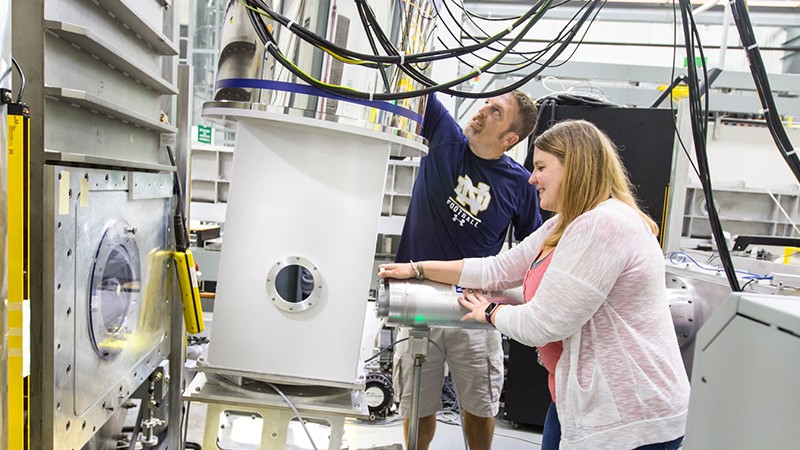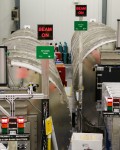A new magnet at Oak Ridge National Laboratory’s High Flux Isotope Reactor (HFIR) is drawing excitement among scientists wanting to study materials at very low temperatures.
An 11 Tesla magnet was recently commissioned for the General-Purpose Small-Angle Neutron Scattering Diffractometer (GP-SANS) instrument at HFIR, beam line CG-2. The horizontal field magnet is designed with an optimal homogeneous field region and ability to use inserts that take samples to ultra-low temperature. This capability coupled with the high neutron flux at GP-SANS will promote emerging research in condensed matter science and make GP-SANS a pre-eminent instrument for these kinds of studies.
“It enables the exploration of new science on GP-SANS, by allowing the user community to go to both high fields and extremely low temperatures, 50 mK, which we were not able to do with our previous magnet,” said Lisa Debeer-Schmitt, CG-2 instrument scientist.
In addition, the magnet can be installed to give a field either parallel or perpendicular to the beam, allowing users to explore multiple areas of science at 11 T. This equipment will typically be used for study of flux line lattices in type II superconductors; to investigate skyrmion lattice systems in chiral magnets; and to study newer magnetic phenomena such as magnetic domains in Mn3O4, and spin ices inYb2Ti2O7.
“We are hoping this capability will attract exciting new research projects and new user communities to GP-SANS,” said DeBeer-Schmitt.
In September, the GP-SANS team will be doing research involving UPt3, a type II superconductor requiring 50 mK temperatures.
HFIR is a DOE Office of Science User Facility. UT-Battelle manages ORNL for the DOE’s Office of Science. The Office of Science is the single largest supporter of basic research in the physical sciences in the United States, and is working to address some of the most pressing challenges of our time. For more information, please visit http://science.energy.gov/. —Lauren Smith







